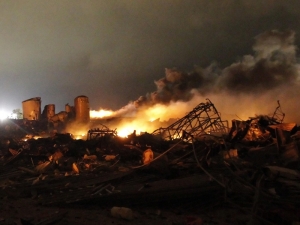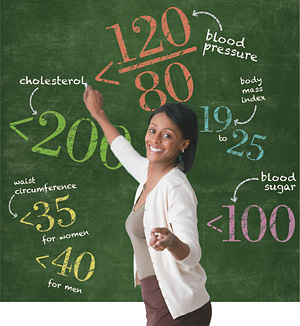 Knowing your biometric numbers is a very valuable tool to identify health risk. Unfortunately many of us do not proactively monitor our bio-metric numbers until we show symptoms when it can be to late. That’s like not checking the oil in your car till the engine blows up.
Knowing your biometric numbers is a very valuable tool to identify health risk. Unfortunately many of us do not proactively monitor our bio-metric numbers until we show symptoms when it can be to late. That’s like not checking the oil in your car till the engine blows up.
Category: Uncategorized
Traumatic Occupational Injury
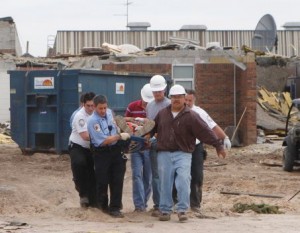 In 2010, there were an estimated 139,064,000 civilian workers in the U.S. private and public sector employed labor force, according to the Bureau of Labor Statistics Current Population Survey . Each day, many of these workers suffer injury, disability, and death from workplace incidents. In 2010, more than 4,500 U.S. workers died from occupational injuries. Although difficult to enumerate, annually about 49,000 deaths are attributed to work-related illnesses. In 2010, an estimated 3.9 million workers in private industry and state and local government had a nonfatal occupational injury or illness. Of those workers, 2 million were transferred, placed on work restrictions, or took time away from work. In the same year an estimated 2.6 million workers were treated in emergency departments for occupational injuries and illnesses, and approximately 110,000 of these workers were hospitalized (NIOSH, unpublished data, 2012).
In 2010, there were an estimated 139,064,000 civilian workers in the U.S. private and public sector employed labor force, according to the Bureau of Labor Statistics Current Population Survey . Each day, many of these workers suffer injury, disability, and death from workplace incidents. In 2010, more than 4,500 U.S. workers died from occupational injuries. Although difficult to enumerate, annually about 49,000 deaths are attributed to work-related illnesses. In 2010, an estimated 3.9 million workers in private industry and state and local government had a nonfatal occupational injury or illness. Of those workers, 2 million were transferred, placed on work restrictions, or took time away from work. In the same year an estimated 2.6 million workers were treated in emergency departments for occupational injuries and illnesses, and approximately 110,000 of these workers were hospitalized (NIOSH, unpublished data, 2012).
Each year occupational injuries and illnesses cause employers, workers, and society to pay tremendous costs for workers’ compensation and other insurance, medical expenses, lost wages and productivity, and the personal and societal costs associated with day to day living for injured and ill workers. In 2009, employers spent $74 billion on workers’ compensation insurance alone.
via CDC – Directory of NIOSH Traumatic Occupational Injury Resources.
July 4th – Celebrating the Birth of American Independence
 Variously known as the Fourth of July and Independence Day, July 4th has been a federal holiday in the United States since 1941, but the tradition of Independence Day celebrations goes back to the 18th century and the American Revolution (1775-83). In June 1776, representatives of the 13 colonies then fighting in the revolutionary struggle weighed a resolution that would declare their independence from Great Britain. On July 2nd, the Continental Congress voted in favor of independence, and two days later its delegates adopted the Declaration of Independence, a historic document drafted by Thomas Jefferson. From 1776 until the present day, July 4th has been celebrated as the birth of American independence, with typical festivities ranging from fireworks, parades and concerts to more casual family gatherings and barbecues.
Variously known as the Fourth of July and Independence Day, July 4th has been a federal holiday in the United States since 1941, but the tradition of Independence Day celebrations goes back to the 18th century and the American Revolution (1775-83). In June 1776, representatives of the 13 colonies then fighting in the revolutionary struggle weighed a resolution that would declare their independence from Great Britain. On July 2nd, the Continental Congress voted in favor of independence, and two days later its delegates adopted the Declaration of Independence, a historic document drafted by Thomas Jefferson. From 1776 until the present day, July 4th has been celebrated as the birth of American independence, with typical festivities ranging from fireworks, parades and concerts to more casual family gatherings and barbecues.
via July 4th — History.com Articles, Video, Pictures and Facts.
Enforcement of Workplace Safety and Health
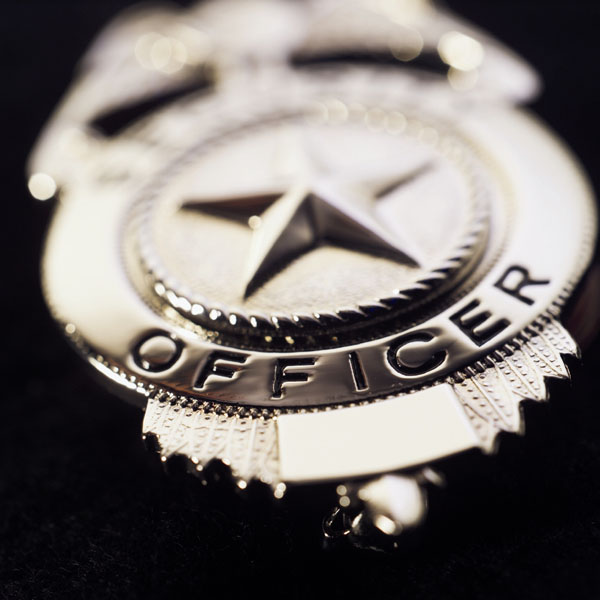 Three Department of Labor (DOL) agencies have responsibility for the administration and enforcement of the laws enacted to protect the safety and health of workers in America.
Three Department of Labor (DOL) agencies have responsibility for the administration and enforcement of the laws enacted to protect the safety and health of workers in America.
Occupational Safety and Health Administration
- OSHA administers the Occupational Safety and Health (OSH) Act.
- Safety and health conditions in most private industries are regulated by OSHA or OSHA-approved state systems.
- Nearly every employee in the nation comes under OSHA’s jurisdiction with some exceptions such as miners, some transportation workers, many public employees, and the self-employed.
- Employers subject to the OSH Act also have a general duty to provide work and a workplace free from recognized, serious hazards.
Mine Safety and Health Administration
- DOL’s MSHA has responsibility for administration and enforcement of the Mine Safety and Health Act of 1977, which protects the safety and health of workers employed in the nation’s mines.
- The Act applies to all mining and mineral processing operations in the United States, regardless of size, number of employees, or method of extraction.
The Fair Labor Standards Act
- FLSA contains rules concerning the employment of young workers, those under the age of 18, and is administered and enforced by DOL’s Wage and Hour Division. Intended to protect the health and well-being of youth in America, the FLSA contains minimum age restrictions for employment, restrictions on the times of day youth may work, and the jobs they may perform.
via U.S. Department of Labor — Find It By Topic — Workplace Safety & Health.
Why is exercise important?
 Have you ever heard the expression “use it or lose it”? Its true! If you don’t use your body, you will surely lose it. Your muscles will become flabby and weak. Your heart and lungs wont function efficiently. And your joints will be stiff and easily injured. Inactivity is as much of a health risk as smoking!
Have you ever heard the expression “use it or lose it”? Its true! If you don’t use your body, you will surely lose it. Your muscles will become flabby and weak. Your heart and lungs wont function efficiently. And your joints will be stiff and easily injured. Inactivity is as much of a health risk as smoking!
- Helps Prevent Diseases-Our bodies were meant to move — they actually crave exercise. Regular exercise is necessary for physical fitness and good health. It reduces the risk of heart disease, cancer, high blood pressure, diabetes and other diseases. It can improve your appearance and delay the aging process.
- Improves Stamina-When you exercise, your body uses energy to keep going. Aerobic exercise involves continuous and rhythmic physical motion, such as walking and bicycling. It improves your stamina by training your body to become more efficient and use less energy for the same amount of work. As your conditioning level improves, your heart rate and breathing rate return to resting levels much sooner from strenuous activity.
- Strengthens and Tones-Exercising with weights and other forms of resistance training develops your muscles, bones and ligaments for increased strength and endurance. Your posture can be improved, and your muscles become more firm and toned. You not only feel better, but you look better, too!
- Enhances Flexibility-Stretching exercises are also important for good posture. They keep your body limber so that you can bend, reach and twist. Improving your flexibility through exercise reduces the chance of injury and improves balance and coordination. If you have stiff, tense areas, such as the upper back or neck, performing specific stretches can help “loosen” those muscles, helping you feel more relaxed.
- Controls Weight-Exercise is also a key to weight control because it burns calories. If you burn off more calories than you take in, you lose weight. Its as simple as that.
- Improves Quality of Life-Once you begin to exercise regularly, you will discover many more reasons why exercise is so important to improving the quality of your life. Exercise reduces stress, lifts moods, and helps you sleep better. It can keep you looking and feeling younger throughout your entire life.
Bicycle Safety
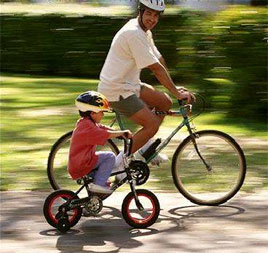 Do not push your child to ride a 2-wheeled bike without training wheels until he or she is ready. Consider the child’s coordination and desire to learn to ride. Stick with coaster (foot) brakes until your child is older and more experienced for hand brakes. Consider a balance bike with no pedals for young children to learn riding skills.
Do not push your child to ride a 2-wheeled bike without training wheels until he or she is ready. Consider the child’s coordination and desire to learn to ride. Stick with coaster (foot) brakes until your child is older and more experienced for hand brakes. Consider a balance bike with no pedals for young children to learn riding skills.- Take your child with you when you shop for the bike, so that he or she can try it out. The value of a properly fitting bike far outweighs the value of surprising your child with a new one. Buy a bike that is the right size, not one your child has to “grow into.” Oversized bikes are especially dangerous.
- Your child needs to wear a helmet on every bike ride, no matter how short or how close to home. Many injuries happen in driveways, on sidewalks, and on bike paths, not just on streets. Children learn best by observing you. Set the example: Whenever you ride, put on your helmet.
- When purchasing a helmet, look for a label or sticker that says the helmet meets the CPSC safety standard.
- A helmet protects your child from serious injury, and should always be worn. And remember, wearing a helmet at all times helps children develop the helmet habit.
- A helmet should be worn so that it is level on the head and covers the forehead, not tipped forward or backwards. The strap should be securely fastened with about 2 fingers able to fit between chin and strap.The helmet should be snug on the head, but not overly tight. Skin should move with the helmet when moved side to side. If needed, the helmet’s sizing pads can help improve the fit.
via Summer Safety Tips.
Freedom isn’t Free…
Fertilizer Plant Explosion – What is Anhydrous Ammonia? –
“Our thoughts and prayers go out to those that were killed and injured in the fertilizer plant explosion in Texas. Some of those were firefighters. We must never take our firefighters and first responders for granted as they risk their lives everyday on our behalf. “ -Randy Boss
Firefighters at the scene of a massive fertilizer plant explosion in Texas were concerned Wednesday night about anhydrous ammonia. According to the Centers for Disease Control and Prevention, anhydrous ammonia is a pungent gas with suffocating fumes that is used as a fertilizer. When exposed to humans, it can cause various problems:
- Anhydrous means without water
- Anhydrous ammonia can rapidly cause dehydration and severe burns if it combines with water in the body
- Symptoms can include breathing difficulty; irritation of the eyes, nose or throat; burns or blisters.
- Exposure to high concentrations can lead to death.
- Victims require treatment with large quantities of water for at least 15 minutes
- It must be stored at high pressure, according to the University of Minnesota.
- It is a low-cost, highly effective nitrogen-based fertilizer, the University of Arkansas said.
- It is one part nitrogen and three parts hydrogen.
- When released, the vapors initially move close to the ground, causing greater risk for exposure.
Keep Children Safe – Home Safety Checklist
 Here is a list of safety tips to keep children safe at home.
Here is a list of safety tips to keep children safe at home.
- Sound the Alarm: Install smoke detectors on every floor of your home and carbon monoxide detectors near sleeping areas. If already installed, test them! Tip: Replace the batteries every daylight-saving time change.
- Avoid Overload: Check for overloaded extension cords – usage should not exceed the recommended wattage.
- Don’t Get Tippy: If young children are in the home, bookshelves and other furniture should be firmly secured with wall brackets to prevent tipping.
- Paint Safe: Check walls for loose paint. If re-painting, do so in a well-ventilated area and consider VOC-free paint.
- Childproof, Childproof, Childproof: Check your local library or look online for complete lists of childproofing suggestions. Areas of particular danger include outlets, appliances, electronics, stairs and windows.
- Cover Outlets: Cover all unused outlets to prevent children from sticking a finger in the socket.
- Watch Cord Placement: Extension cords should not be placed under rugs or heavy furniture, tacked up or coiled while in use.
- Get Grounded: All major appliances should be grounded. Be sure to check your ground fault circuit interrupters regularly.
- Plan Your Escape: Practice a fire escape plan with your family where you identify two exits for every room and what to do with young children.
- Give Your Air Heater Some Space: All air heaters should be placed at least three feet from beds, curtains or anything flammable.
- Keep Extinguishers Handy: Place all-purpose fire extinguishers in key locations in your home – the kitchen, bedroom and basement. Be sure to check expiration dates regularly and know how to use them safely.
- Create a Safe Exit: In addition to alarms and extinguishers, consider an escape ladder if your home has two floors. Keep emergency numbers and contacts readily available by the phone.
- Unplug Appliances: Unplug appliances and electronics when not in use and store them out of reach.
- Go New in the Nursery: Check that all painted cribs, bassinettes and high chairs were made after 1978 to avoid potential lead paint poisoning.
- Cool Your Jets: Set your water heater below 120 degrees Fahrenheit to avoid potential burns and to save energy.
- Put Away Medications: Take medications and medical supplies out of your purse, pockets and drawers, and put them in a cabinet with a child safety lock.
- Look for UL: The UL Mark appears on products that have been tested, verified and inspected for safety. Make sure to look for it to keep your holidays safe and bright.
via Home Safety | Home Safety Tips | Home Safety Checklist | Safety at Home.
New Year Resolutions – How Are You Doing?
 The Truth About New Year Resolutions:
The Truth About New Year Resolutions:
About 40 to 45% of adults make one or more New Year’s resolutions each year.
Most popular resolutions include promises of weight loss, exercise and quitting smoking.
Also common are resolutions dealing with better money management / debt reduction.
The following statistics reveal how many of these resolutions are maintained as time goes on:
- Past the first week: 75%
- Past the first week: 75%
- Past 2 weeks: 71%
- After one month: 64%
- After 6 months: 46%
- About 67% of people make three or more resolutions.
Expert’s Advice on New Year’s Resolution
Though many people make New Year’s Resolution with enthusiasm and zeal, yet it has been noticed that most of these resolution fail shortly after. Experts feel that the reason for the failure of these resolutions is that most people do not back their resolution with proper planning. It is recommended that one should plan how to effectively deal with the temptation of giving up the resolution in the mid-way. Besides, it is recommended that one should take help of friends and dear ones to keep their motivation level high.


